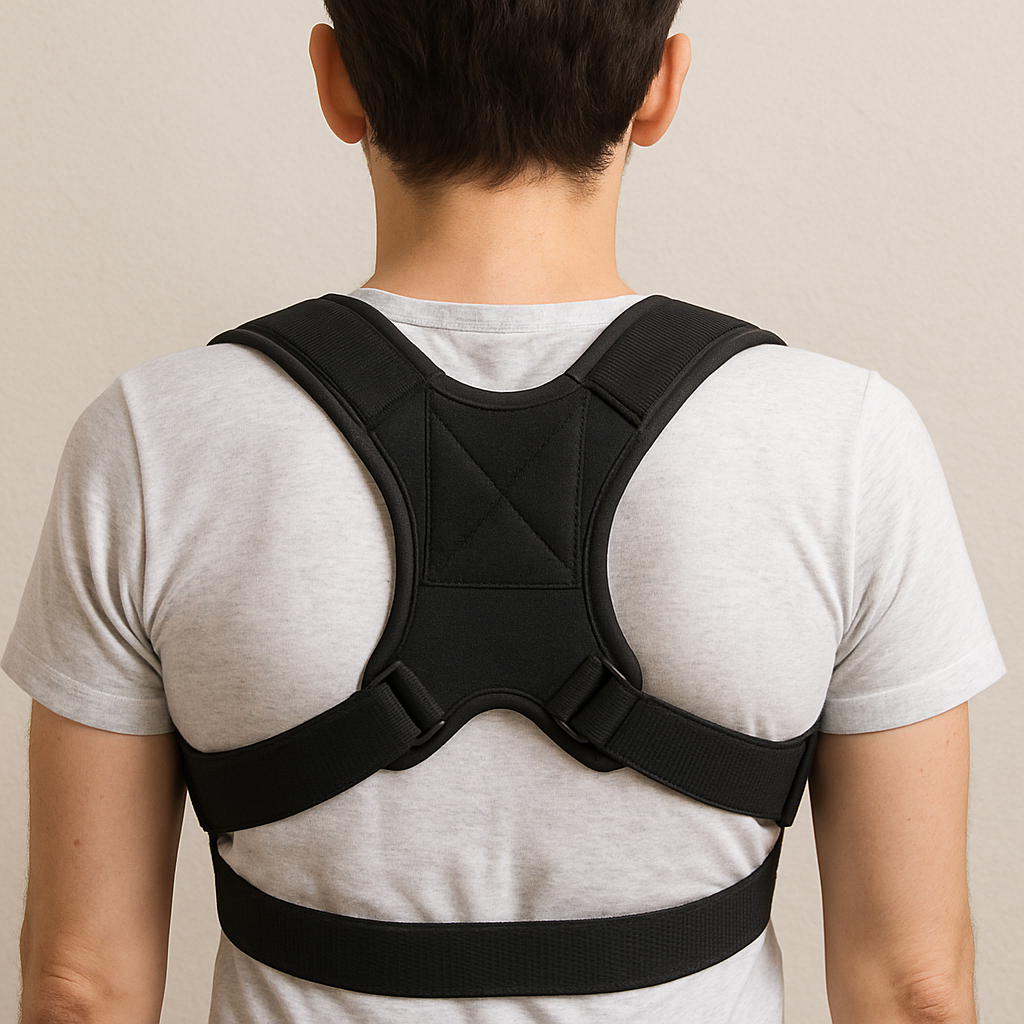
In today’s fast-paced world, many people find themselves slouching over desks or hunched over devices, leading to poor posture and even the development of a hunchback, a condition known as kyphosis. Using a back brace can be a simple and effective solution to correct posture and alleviate discomfort. This article will guide you through choosing the right back brace for hunchback, focusing on its benefits and how it can aid in posture correction.
Understanding Hunchback and Its Causes
Hunchback, or kyphosis, is a condition characterized by an excessive forward curvature of the upper spine. It can occur due to various reasons, including poor posture, osteoporosis, spinal injuries, or congenital disabilities. Over time, if left unaddressed, it can lead to discomfort, pain, and even breathing difficulties.
The Importance of Correct Posture
Maintaining proper posture is essential not just for appearance but for overall health. Good posture ensures that the body’s weight is evenly distributed, reducing strain on muscles and ligaments. It also helps in preventing chronic back pain and improves breathing and digestion. Therefore, addressing hunchback with a posture correction brace can significantly enhance your quality of life.
What is a Back Brace for Hunchback?
A back brace is a supportive device designed to correct posture and alleviate discomfort associated with hunchback. It provides support to the spine, encouraging it to align correctly. Back braces come in various designs, each catering to different needs and severity of kyphosis.
Types of Back Braces
- Posture Correctors: These are lightweight braces designed to gently pull the shoulders back, promoting a straight and aligned posture. They are ideal for mild cases and for those who spend long hours sitting.
- Full Back Braces: Offering more comprehensive support, these braces cover the entire back and are suitable for moderate to severe kyphosis. They help in maintaining an upright posture by providing firm support to the spine.
- Rigid Braces: Made from hard materials, rigid braces are prescribed for severe cases or after surgery. They provide maximum support and limit movement, ensuring the spine remains aligned.
- Soft Braces: These are made from flexible materials and are comfortable to wear for extended periods. They are perfect for mild conditions and provide subtle support to encourage better posture.
Benefits of Using a Back Brace
Wearing a back brace offers several benefits beyond just correcting posture. Here are some key advantages:
Posture Correction
A back brace encourages the spine to align properly, reducing the forward curvature associated with hunchback. By consistently wearing a brace, you can train your muscles to maintain the correct posture even without the brace.
Pain Relief
By supporting the spine and distributing weight evenly, back braces can significantly reduce back pain and discomfort. They alleviate the strain on muscles and ligaments, allowing them to relax and heal.
Improved Confidence
Standing tall with a straight back can boost your confidence and self-esteem. A good posture not only enhances your appearance but also influences how you feel about yourself.
Enhanced Mobility
For those with severe kyphosis, a back brace can improve mobility by stabilizing the spine and reducing pain. This allows for greater freedom of movement and participation in daily activities.
How to Choose the Right Back Brace
Selecting the right back brace involves considering several factors to ensure it meets your specific needs. Here are some tips to guide your decision:
Assess Your Needs
Consider the severity of your condition and the level of support you require. For mild cases, a simple posture corrector may suffice, while more severe cases might necessitate a full or rigid brace.
Consult a Professional
It’s always wise to consult with a healthcare professional, such as a physical therapist or orthopedic specialist, who can assess your condition and recommend the most suitable brace for your needs.
Comfort and Fit
The brace should be comfortable to wear for extended periods. Look for adjustable straps and breathable materials to ensure a snug fit without discomfort.
Quality and Durability
Invest in a high-quality brace that is durable and easy to maintain. A well-made brace will provide consistent support and last longer.
by Raflian Azhar (https://unsplash.com/@raflianazhar)
Tips for Effective Use of a Back Brace
To maximize the benefits of your back brace, follow these tips:
- Wear Consistently: For best results, wear your back brace as recommended by your healthcare provider. Consistent use helps train your muscles to adopt the correct posture.
- Combine with Exercises: Complement the use of a back brace with exercises that strengthen your back and core muscles. This holistic approach ensures long-term posture correction.
- Gradual Adjustment: Give your body time to adjust to the brace. Start by wearing it for short periods and gradually increase the duration as you become more comfortable.
- Regular Check-ups: Schedule regular check-ups with your healthcare provider to monitor your progress and make any necessary adjustments to your treatment plan.
Conclusion
Choosing the right back brace for hunchback can make a significant difference in your posture and overall well-being. By understanding your needs and consulting with a professional, you can find a brace that provides the support and comfort you require. Remember, a back brace is most effective when used consistently and in combination with exercises and lifestyle changes. Stand tall and take the first step towards a healthier, more confident you.

